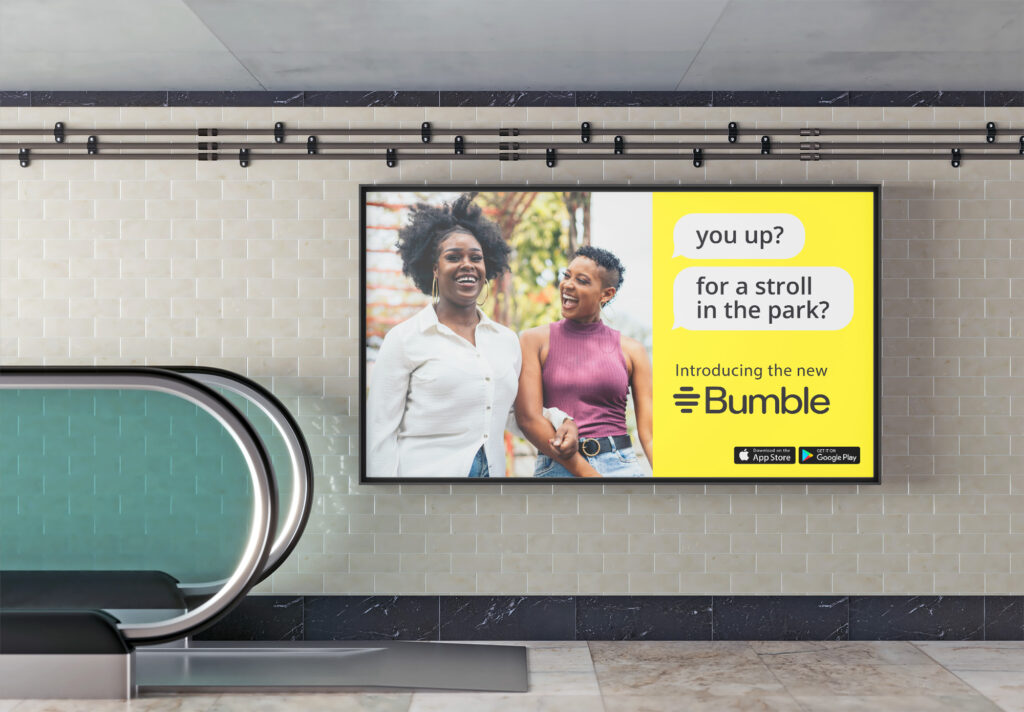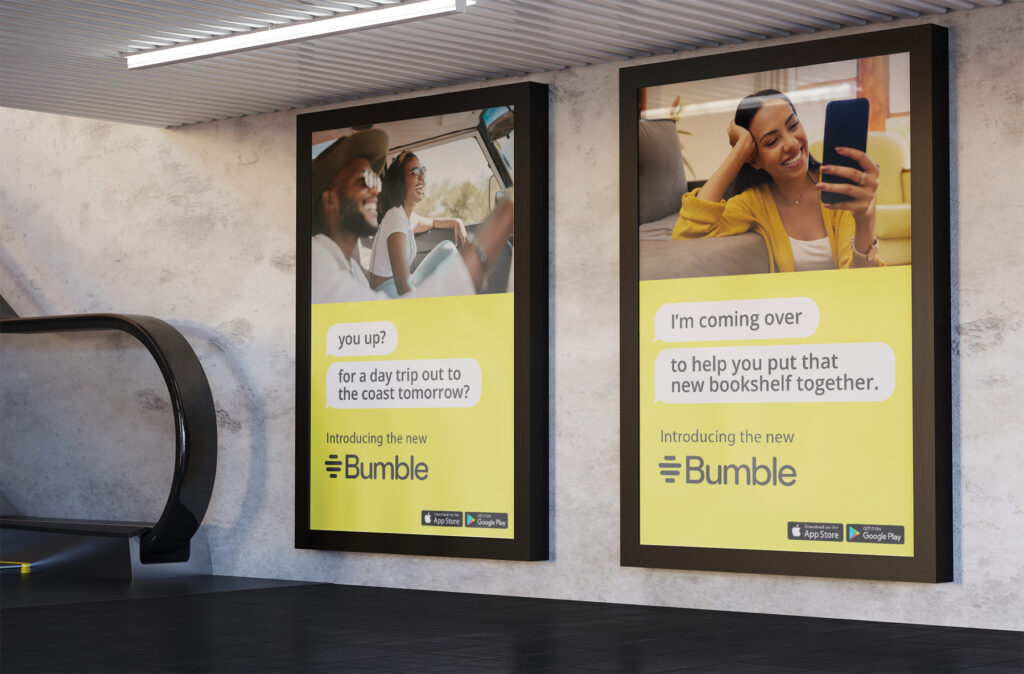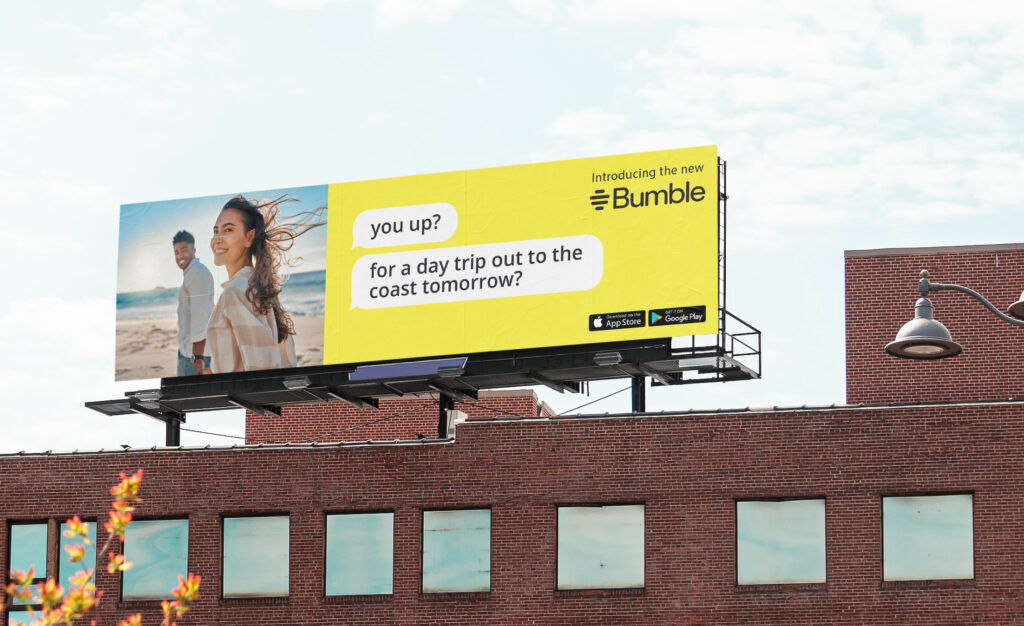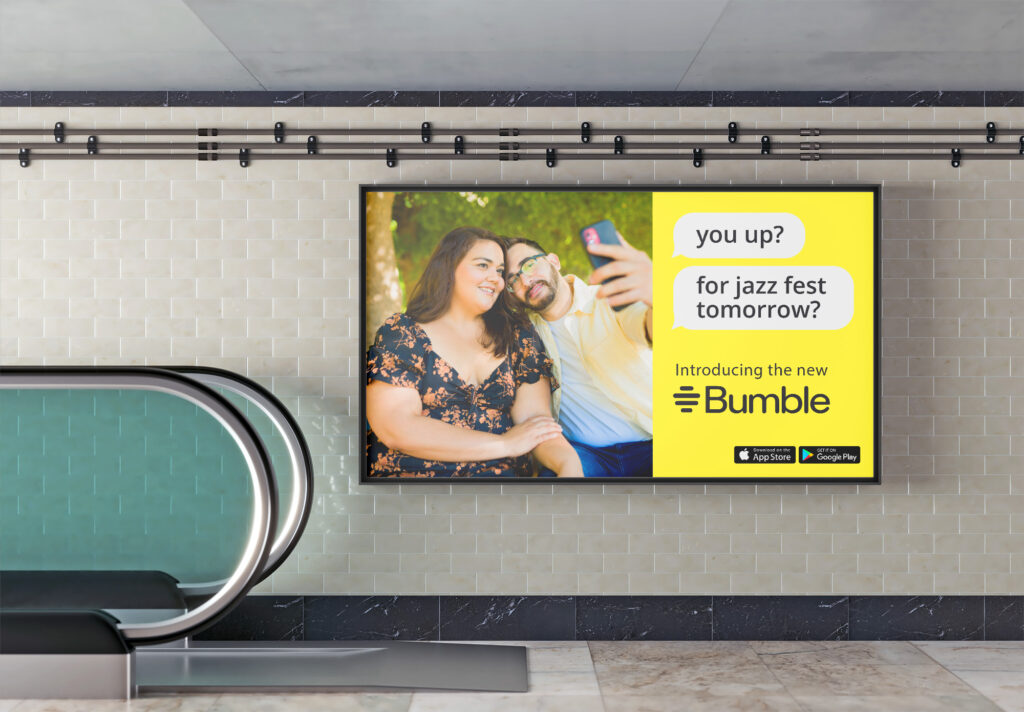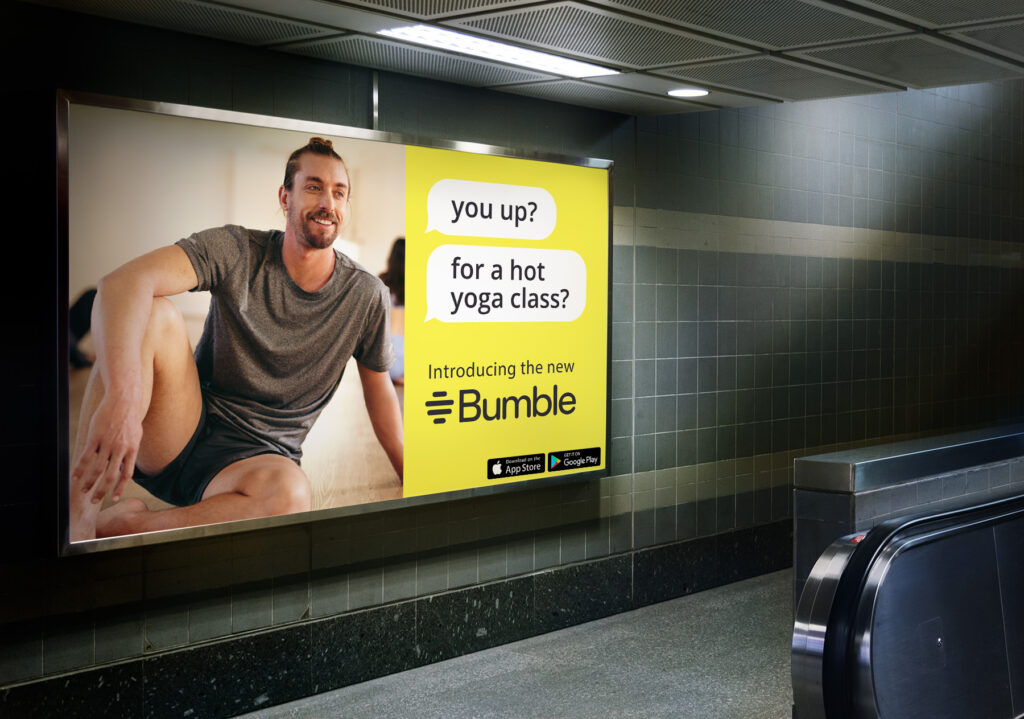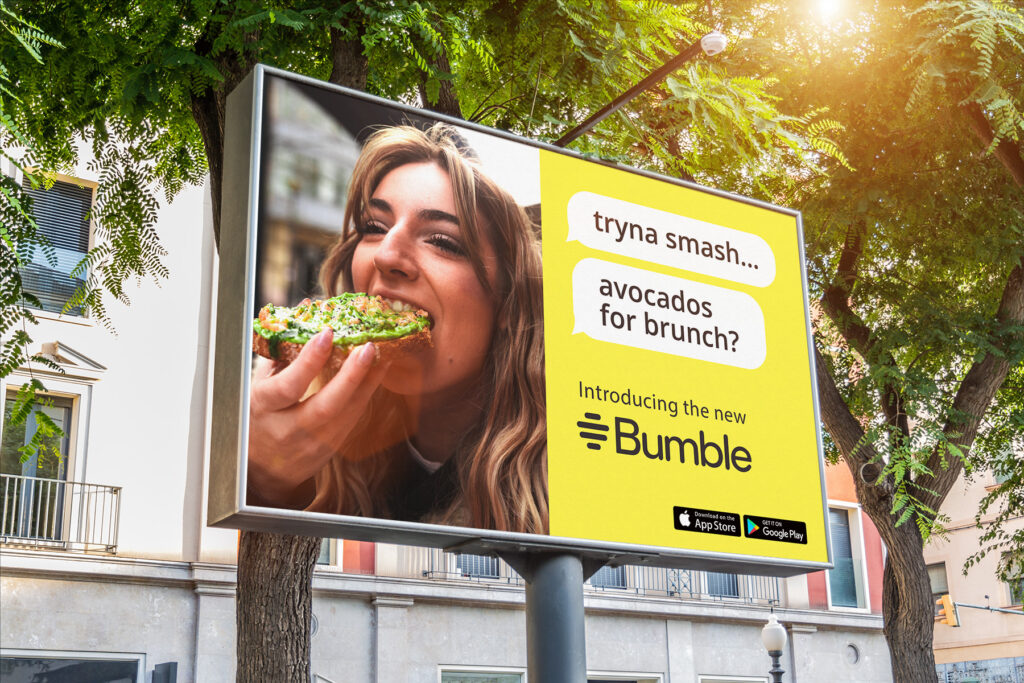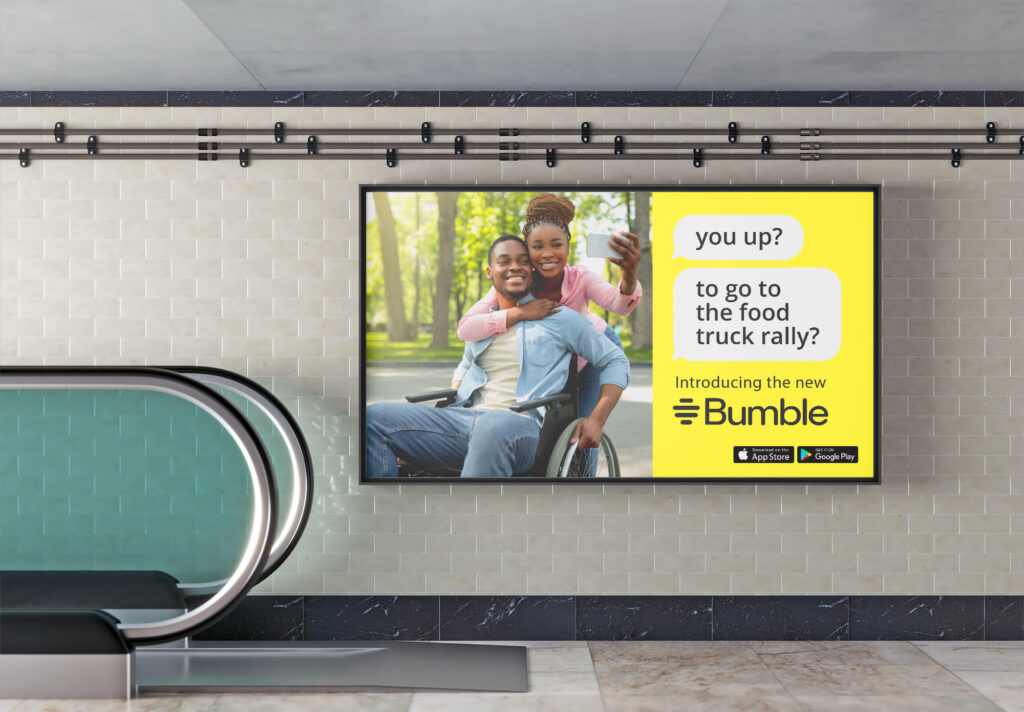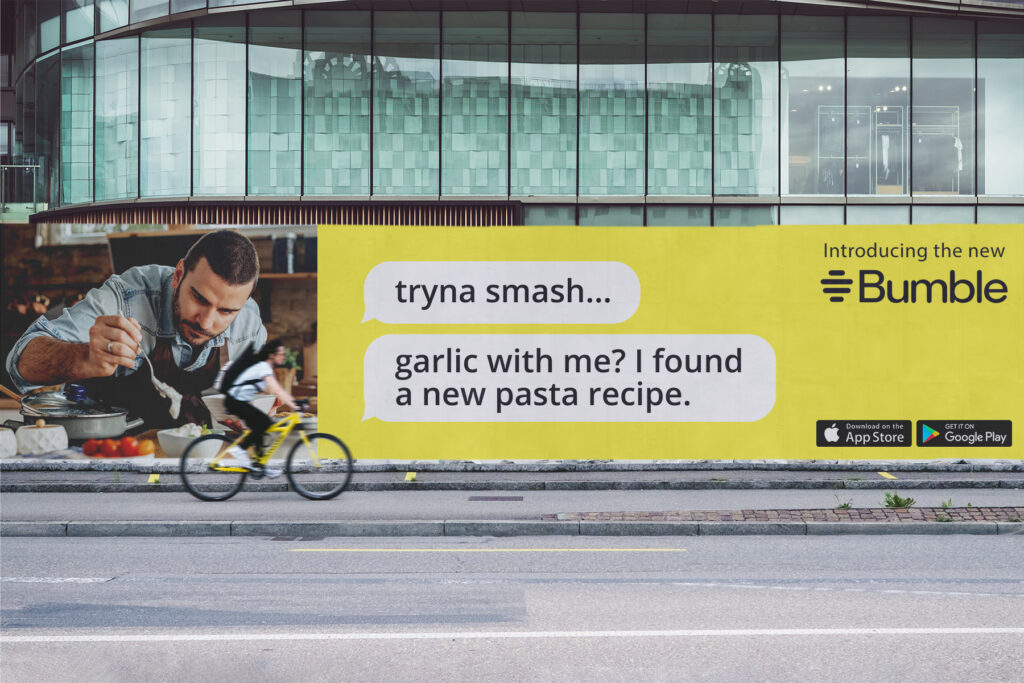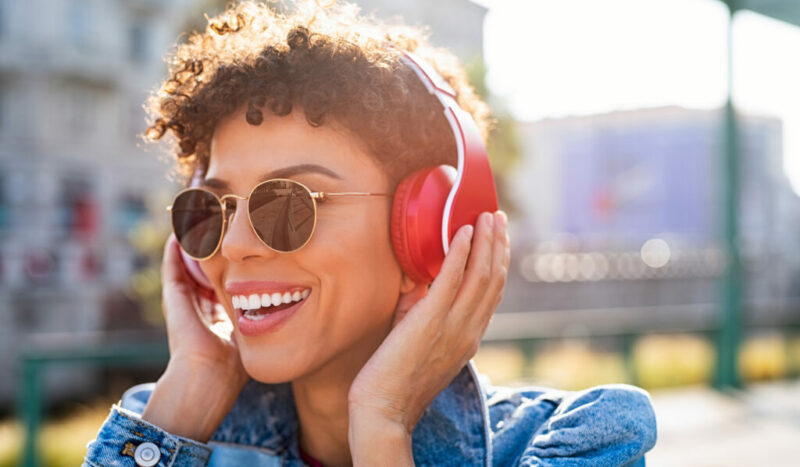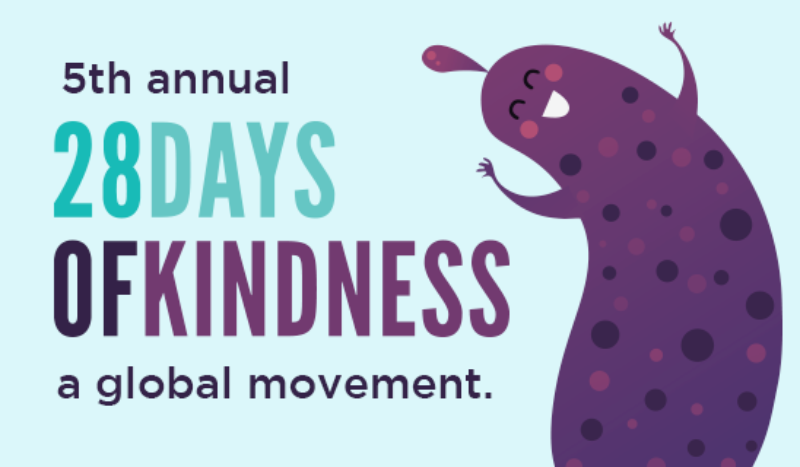I’d like to imagine that dating apps started as a wholesome idea to connect with individuals you might not normally meet in your day-to-day life. You’re putting yourself out there to a group of like-minded people who are aligned to meet someone special. So, when did it all go to shit?
Present day in the United States, there are over a thousand online dating platforms, including Tinder, Bumble, Hinge, Plenty of Fish, Grindr, Badoo, OKCupid, Match.com, and Zoosk. Oftentimes, people are on several apps, and managing your messages could very well be a part-time job.
Did you know that 56% of adults view dating apps and services as either somewhat or very negative? Women are more likely to have a negative opinion on dating sites and apps than men. That’s no surprise, and the dating app Bumble noticed this sentiment. In an attempt to win over lovelorn users, they started working on a brand refresh and new global campaign.
Bumble’s Ad Campaign
Bumble’s campaign depicted women struggling with online dating fatigue (click link to view). After a bad online dating experience, you might’ve lamented to your friends that you were swearing off all men, or never going on another date again. This campaign aimed to lean into that way of venting and sought to reassure Bumble users. Bumble made changes to their app for a better user experience, so users don’t have to drastically change themselves. Hence the new tagline “We’ve changed, so you don’t have to.”
Bumble doubled down on this campaign by deleting all previous Instagram posts and uploading new marketing images. But what was likely intended as jests made in good humor about the communal frustrations of dating, ended up being controversial for poking fun at celibacy and abstinence. When the ads and billboards started rolling out across the US, they were not well received, and this entire ordeal has been branded as the “Bumble Fumble.” There was so much controversy online, Bumble had to pull the campaign and issue a formal apology.
What Went Wrong?
The ads were just poking fun at celibacy and abstinence, but they weren’t well received by Bumble users. The tone of the ads was the opposite of empowering and used shame to coerce women into getting back on the app.
Cindy Noir wrote on X, formerly known as Twitter. “It’s…a very offensive way to tell your female customers that you’re profiting off of their legs being open.”
Bumble apologized for the blunder and removed the ads.
I was previously a Bumble user when I was traveling and working abroad. I used it as a way to make new friends (Bumble BFF) and consider this app a game-changer when it comes to connecting with new people in new spaces. Likewise, I know firsthand that there are good connections that come from this app. Since Bumble is asking its users to tell them how they can do better, the creative designer in me couldn’t resist the urge to put together the campaign that should’ve been.
How We Can Fix It
My main issue with Bumble Fumble is that the ads reduced the app to just a tool used for hooking up. I know for a fact that a lot of dating app users are frustrated when they are inundated with inappropriate messages and pictures. Humans crave connection (especially in this post-pandemic landscape). According to Frontiers in Psychology, “The COVID-19 pandemic has resulted in a marked increase in feelings of loneliness and a heightened desire for social connection. The restrictions imposed to curb the virus’s spread have disrupted social networks and physical interaction, leading many to crave human connection more than ever.”
Dating can still be a fun and light-hearted way to get to know someone before you decide what path the encounter should take.
Instead of poking fun at celibacy and abstinence, we’re turning the tables and poking fun at hook-up culture.
You up? … To go to the park tomorrow?
Our campaign idea promotes the flirting that happens at the beginning of getting to know someone and introduces light courtship activities that might occur in the early days. Everyone is familiar with the “eye-roll-worthy” text messages that are symbolic of hook-up culture. “You up?” Let’s smash” and “I’m coming over” are just a few easy examples. But what if instead of someone just texting “you up?” they followed with “for a day trip out to the coast tomorrow?” That’s a very easy win in my book.
Instead of honing in on what happens when you have the worst experience on a dating app, we’re flipping the script and amplifying the good feeling and exciting vibes you have when things just might work out this time. This kind of campaign amplifies the human connections that many people are seeking on dating apps like Bumble and other places. Now, this is no shade to hook-up culture. We’ve just never seen a campaign really poke fun at it while highlighting the diversity of relationships that can unfold.
Representation Matters
There’s something else that I want to call out with Bumble’s campaign, and the marketing efforts of many advertising campaigns in this genre. They are seriously lacking the presentation of diversity across cultures, sizes, and body abilities. For marginalized communities, representation in media is more than just visibility; it’s about seeing their lives and experiences authentically portrayed, which can foster a deeper sense of identity and belonging. It also challenges and changes harmful stereotypes and prejudices (source: The New York Times).
Lauren Appelbaum, SVP of Communications and Entertainment & News Media at RespectAbility, emphasizes the importance of representation, stating, “The inclusion of disabled talent does not happen by accident. It is critical to have representation behind the scenes to ensure better and more authentic representation on screen” (Nielsen). This sentiment highlights the need for inclusive hiring practices within the media industry to ensure diverse narratives are authentically told.
Additionally, authentic portrayal helps combat stereotypes and fosters a more nuanced understanding of these communities.
Research from the Center for Scholars & Storytellers further supports this, explaining that positive portrayals of diverse characters can significantly impact mental health and self-esteem. They argue that seeing relatable characters helps individuals create a sense of self and normalizes diversity, reducing stigma and promoting acceptance (Center for Scholars & Storytellers).
Overall, representation matters because it validates the experiences of marginalized groups, influences societal attitudes, and can drive positive social change. We wanted to see more diverse representation across the board in Bumble’s ads. So, for our version, we added that in.
Hey Bumble, What Happens After You Apologize?
Tone-deaf campaigns often signal that your leadership and marketing team are in desperate need of diversity. Who do you have seated at your table? At the very least, I’m curious who you tested the ads out on before going public. The thing about the Bumble Fumble is that in a few weeks the public will forget that it ever happened. There will be some new thing that demands our attention and our memes and TikTok video responses. Bumble, I hope you have some action steps lined up for after your apology. B it’s no secret that all too often companies fall short with what comes next. Selfishly, I also think you should give us a call.
Some More Deep Dives
Hey, if you liked this deep dive, you might also like some of our other design challenge write-ups. Here are some of our other fun design challenge adventures:
- Deep Dive: If We Branded an Improv Team
- Deep Dive: If We Designed a Landing Page for Baltimore
- Deep Dive: If We Designed a Boutique Sparking Water Brand
- Deep Dive: If We Designed a Mobile App for Weather
Thanks for taking a deep dive with us. Sign up for our monthly newsletter to learn more about what we’re up to.
